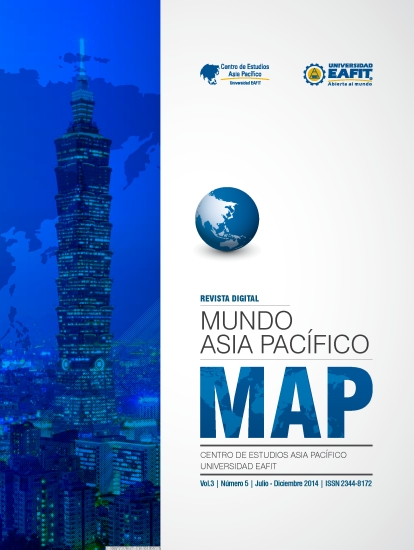Hanok: arquitectura en armonía con la naturaleza
Main Article Content
Keywords
Hanok, architecture, Confucianism, Taoism, modern architecture.
Abstract
This article aims to encourage the approach to Korean culture through the description of the Hanok traditional architecture and to point out its special consideration of the natural environment and the benefits to those who live there. Hanok is the term used to refer to a house that is built in the Korean traditional style which is characterized by the use of natural materials such as timber, paper, clay and stone in its construction. The Hanok also epitomizes certain values from the Korean culture such as Confucianism and Taoism; and its methods of construction and concepts influence more recent schools of architecture.
Downloads
References
A. Cardno, C. (2014). http://www.asce.org/. Obtenido de http://www.asce.org/CEMagazine/ArticleNs.aspx?id=23622330353#.VFvRdPnF-VA
Burckhardpartner. (2012). http://www.burckhardtpartner.ch/. Obtenido de http://www.burckhardtpartner.ch/tl_files/content/katalog/news/2012/Press-Release_Burckhardt+Partner_wins_competition_Swiss_Embassy_Seoul_121204.pdf
choeunart. (s.f.). Hanji - Korean Hand-made Paper. Obtenido de http://www.choeunart.com/Page/2864/0-1/Hanji+(%ED%95%9C%EC%A7%80).aspx
Choi, K.-R., & Yu, C. (2011). Sustainable design for Asian Housings: Traditional culture, lighting and aesthetics. Artículo . Obtenido de http://ibe.sagepub.com/content/20/5/485.full.pdf+html
Cultural Heritage Administration of Korea. (s.f.). english.cha.go.kr. Obtenido de http://english.cha.go.kr/english/search/search_new.jsp
Dunbar, J. (Febrero de 2012). visitkorea.or.kr. (K. T. Organization, Ed.) Obtenido de http://spanish.korea.net/NewsFocus/Travel/view?articleId=99943
Hanstyle. (s.f.). HANSTYLE KOREA THE SENSE. Obtenido de http://www.han-style.com/english/hanok/meaning.jsp
Jaekee, D. (2010). http://www.list.or.kr/. Recuperado el 2014, de http://www.list.or.kr/articles/article_view.htm?Div1=11&Idx=441
Kim, B. r. (1999). Natural Perspective Revealed in Traditional Korean Architecture. Obtenido de http://koreana.kf.or.kr/main.asp?volumn=13&no=3&lang=
Kim, B.-r. (2013). Patios y jardines, cómo los coreanos conviven con la naturaleza. Koreana .
Kim, S. (2009). Department of architectural engineering . Kyung Hee University .
Korea tourism organization. (s.f.). Official site of Korea Tourism Org.: Philosophy . Obtenido de Hanok traditional houses : http://english.visitkorea.or.kr/enu/AC/AC_EN_4_5_2_1.jsp
Korean culture and information service. (2011). Obtenido de http://www.kocis.go.kr/
Lee, K. (2011). ECONOMIC VALUE OF HANOK REGENERATION PROJECT IN SEOUL. Paris: ICOMOS. Obtenido de http://openarchive.icomos.org/1293/1/IV-2-Article4_Lee.pdf
Nilesh, P. (s.f.). http://theculturetrip.com/. Obtenido de http://theculturetrip.com/asia/south-korea/articles/hanok-the-forerunner-to-eco-architecture-/
Sook, P. H. (s.f.). The Korea foundation. (K. Foundation, Ed.) Koreana. Obtenido de http://www.koreana.or.kr/months/news_view.asp?b_idx=1129&lang=ru/&page_type=list#k
Tucker, & Berthrong. (1998). Confucianismo y ecología.
Window on Korean culture (2010). [Película].www.flickr.com/photos/marco2001/2704435119/in/photostream

